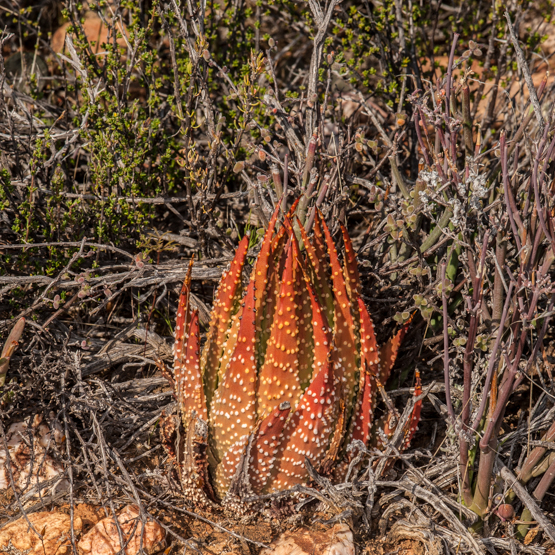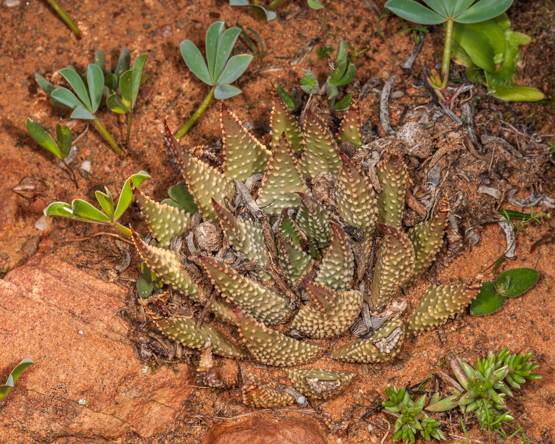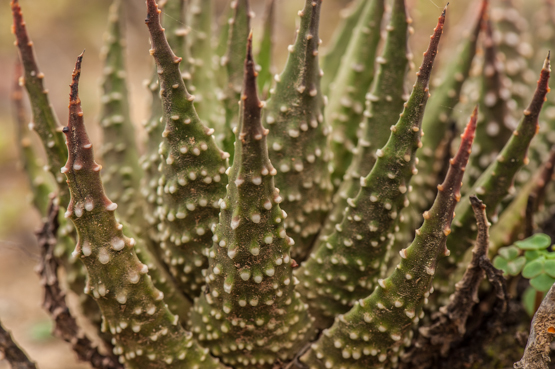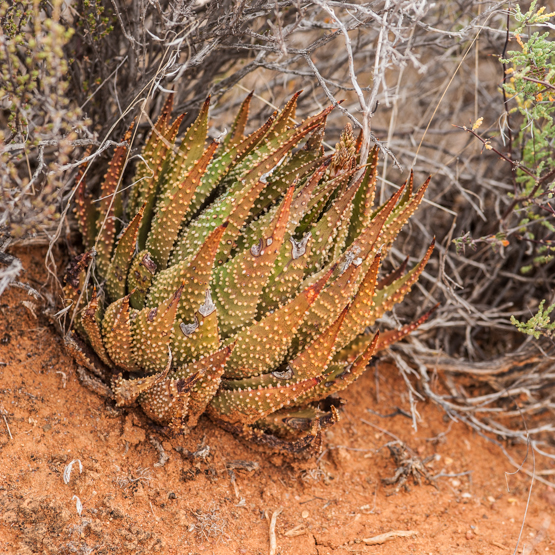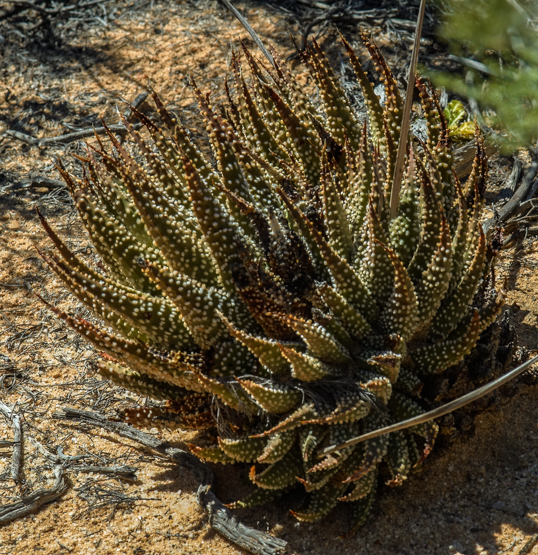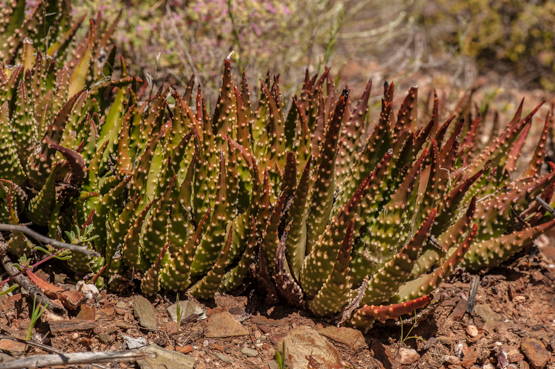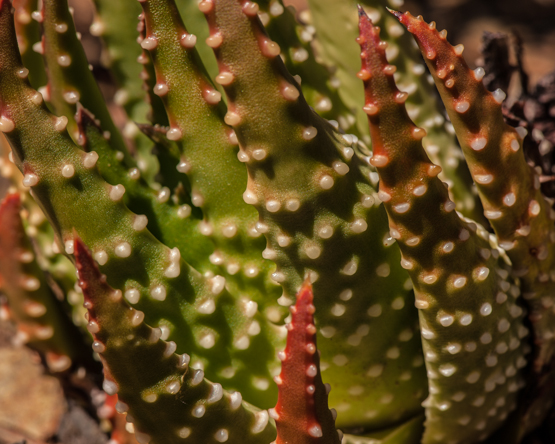The flowers are white to pale yellow and to 5.5 cm in diameter. They look as if made from crepe paper, thereby creating a striking contrast with the starkness of the spiny stems.
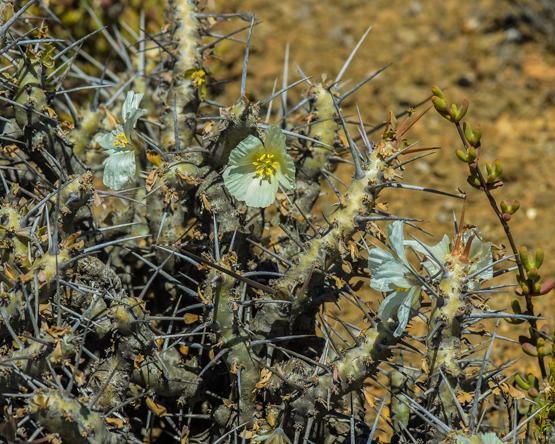
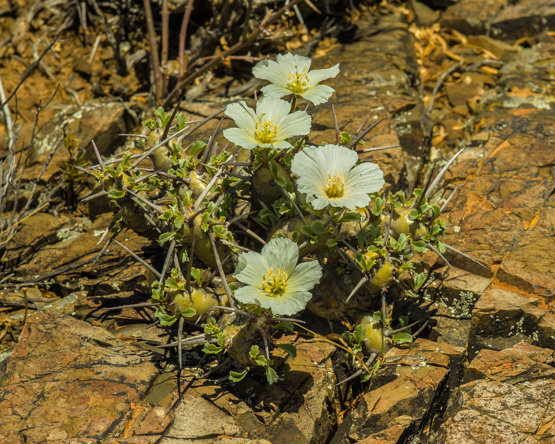
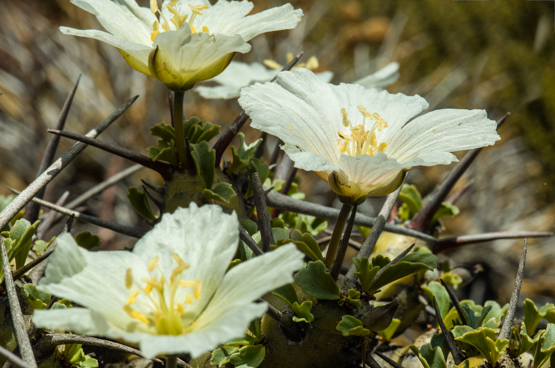
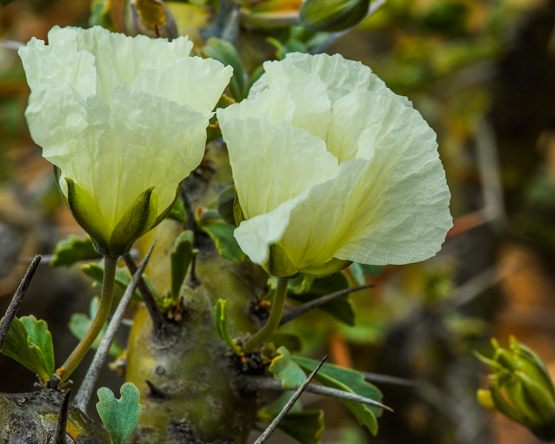
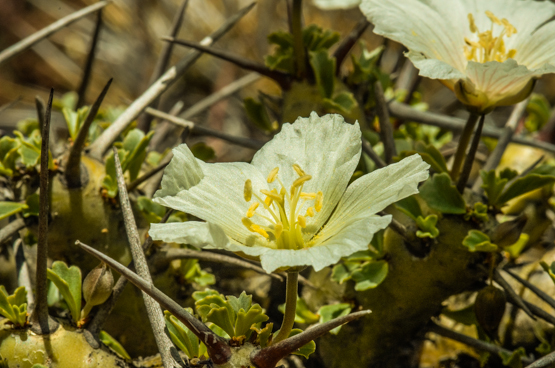
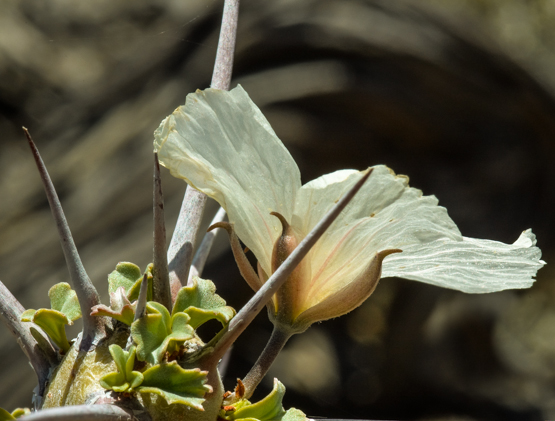
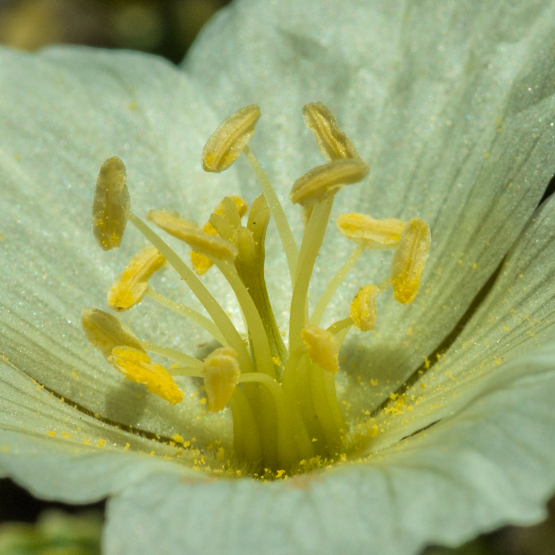
The flowers are white to pale yellow and to 5.5 cm in diameter. They look as if made from crepe paper, thereby creating a striking contrast with the starkness of the spiny stems.







The plants form shrubs up to 75 cm tall and seem to prefer stony plains and low ridges. Their thick stems (up to 2 cm thick) have a hard skin containing large quantities of resin and wax. This impervious layer is an excellent way of preventing desiccation.
It also means that the stems can be easily ignited to act as a candle or start a fire.
When you have a good look at the first three pictures, you will notice that the spines start out as leaf stalks, which after a while shed the leaf blades and become hard and rigid.

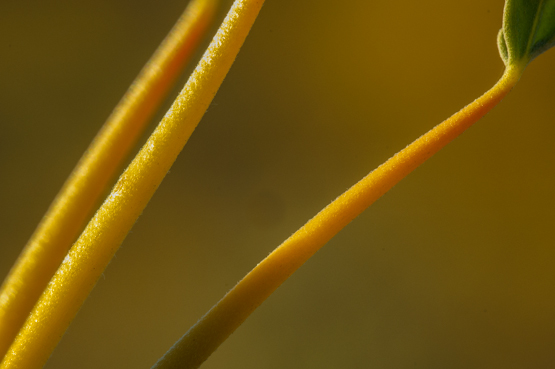
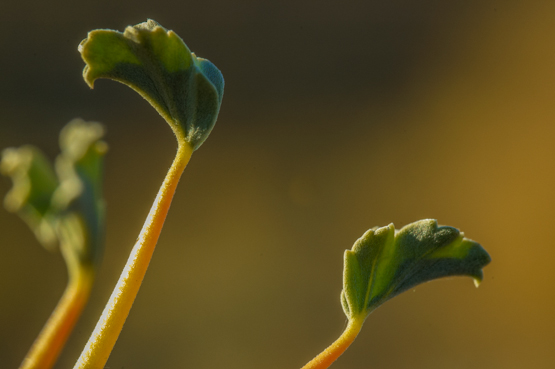
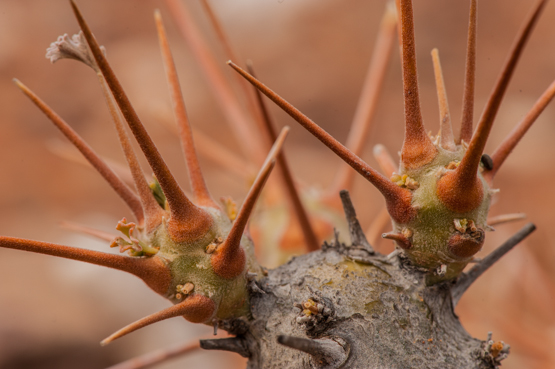
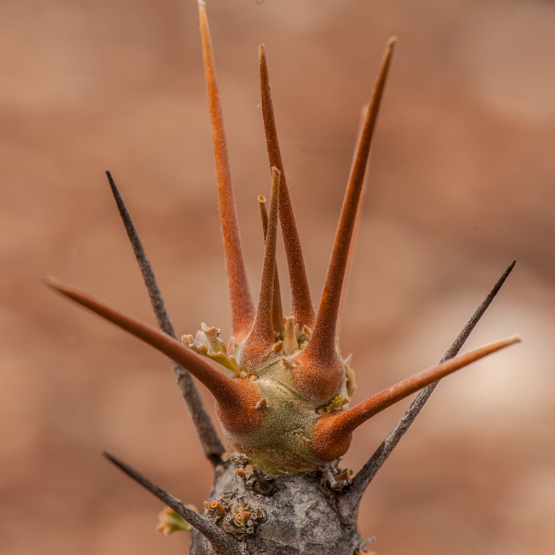
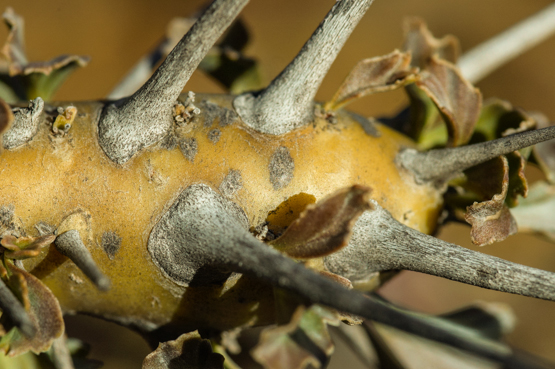
To be continued.
Together with M. salmoniflora this is the most common succulent Monsonia. The plants are widely distributed in the southwestern part of Namibia and the winter rainfall area of South Africa. They grow here mainly in winter from May to July and flower mostly from August to early November. The species also occurs in the summer rainfall regions of Bushmanland and the Great Karoo, where they are dormant from May to August and grow in spring and autumn. Not surprisingly one can also find them in the transitional zones between the summer and winter rainfall areas.
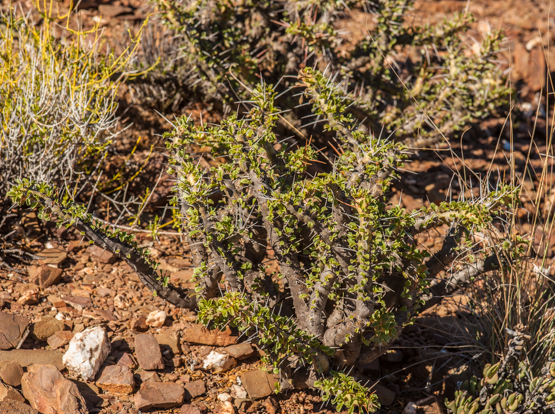
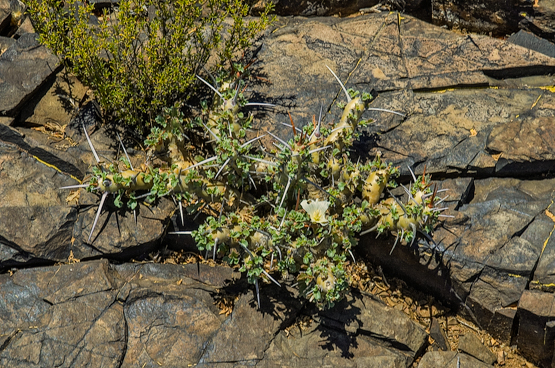
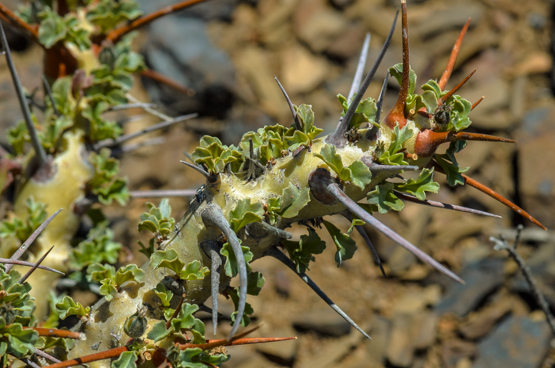
To be continued.
The fact that this species is a deciduous geophyte is reflected in the name, as one of the meanings of the word resurgens is: “Rising again, as from the dead”.
The plants are only up to 3 cm tall, with a thick caudex covered in cork, short stems and
leaves with large bladder cells.
In June-September they produce greenish yellow to pale salmon, distinctly scented flowers about 4 cm in diameter.
If you want to see the plants in nature, you have to go to the Northern or Western Cape Province, where they are widespread in the winter rainfall area from Namaqualand to Ceres and Laingsburg.
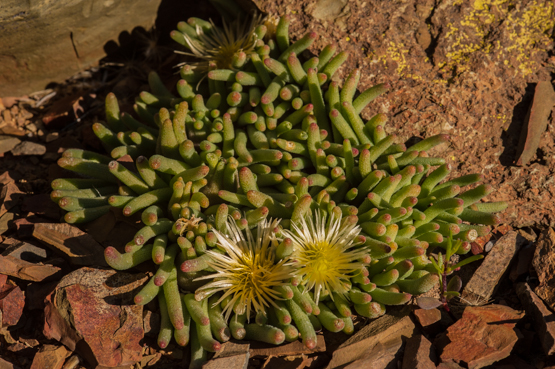
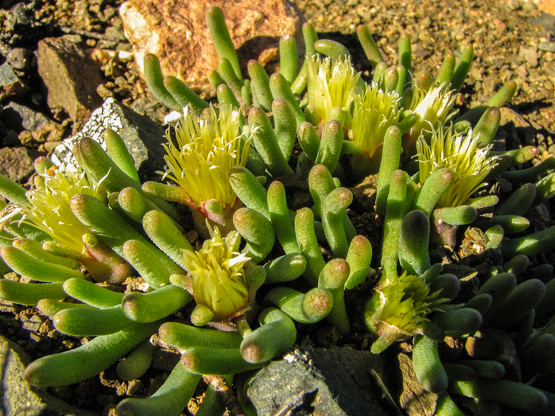
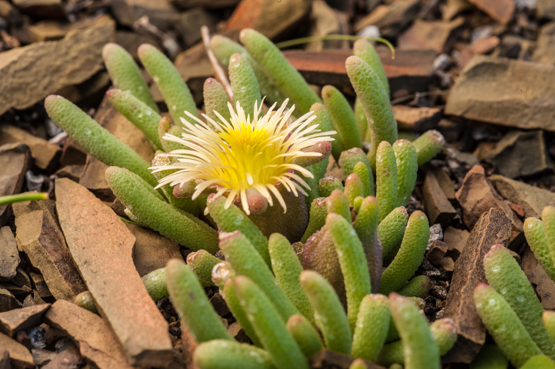
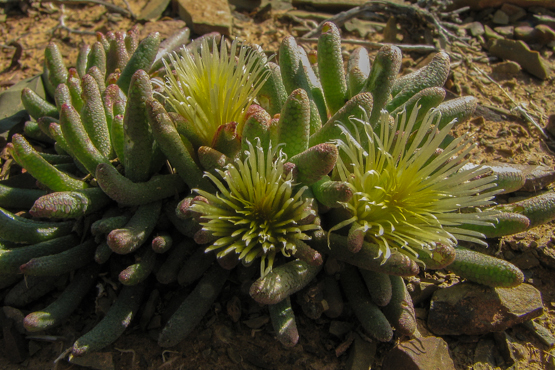
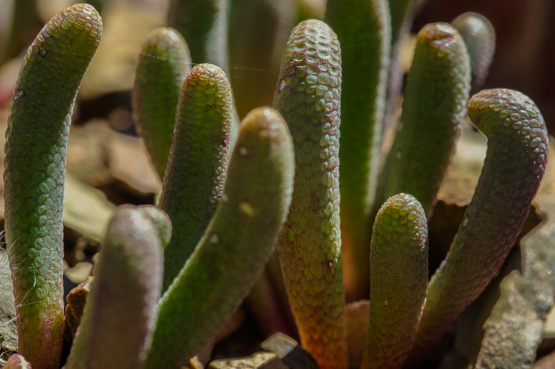
I first saw plants of this species in autumn (May 2006) and had no idea what they were. Some peculiar Mesem maybe? The first picture gives you an idea of what they looked like.
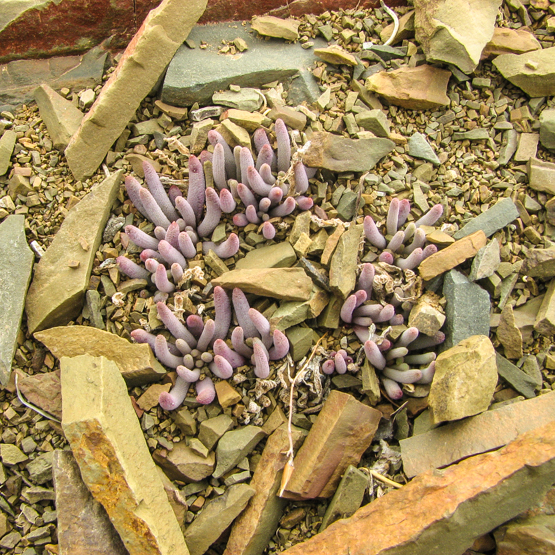
It took me about half a year to return to the spot (a few km northwest of Matjiesfontein) to try and make some good pictures, but when I came there, the plants had disappeared. There were no signs of digging by man or beast and I was sure it was the right spot. So what had happened? After a while it started to dawn upon me that the only thing that was wrong was the time. Because summer was approaching, the plants had done their annual disappearing act and I would have to wait till autumn to see them again.
In March of the following year I found out that the species was rather common in the area and also that they sometimes were much more visible (see pictures below).
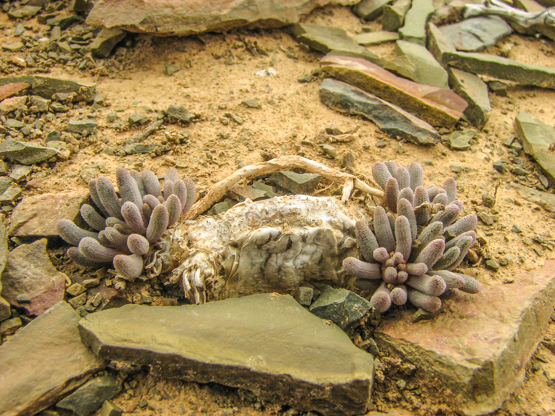
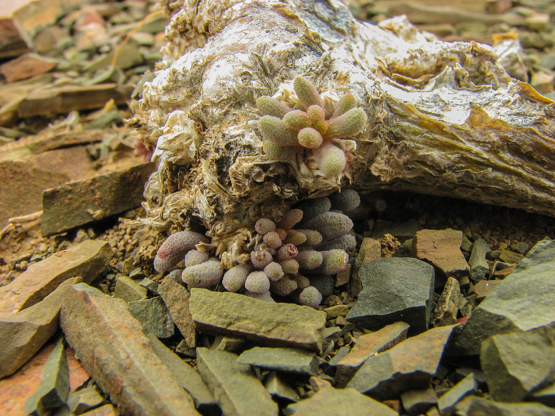
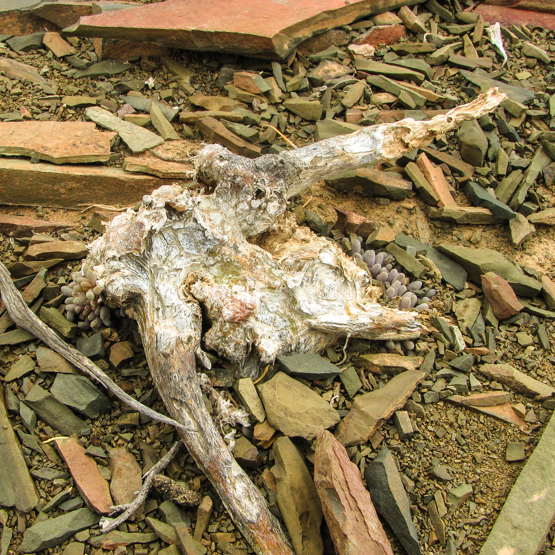
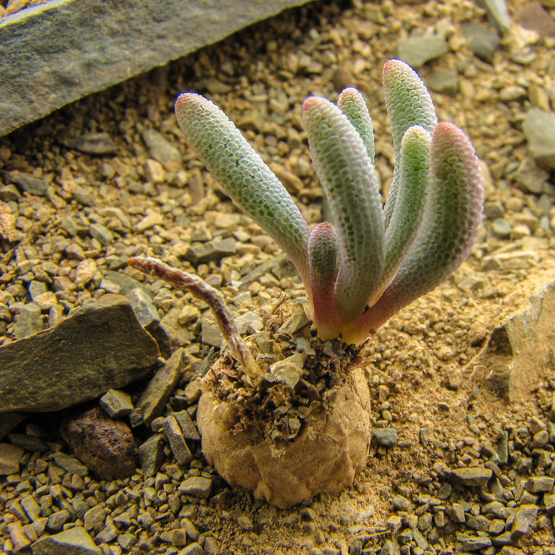
To be continued.
With their leaves covered with a thick white bloom, these plants are both distinctive and beautiful. Sometimes the leaves have some darker spots.
The flowers are white or pale pink and appear in Jan.-Feb. (The flowering plants were photographed 9 February at Kanonkop in Montagu).
One can find the plants on sandstone slopes in the mountains between Robertson and Montagu and eastward to the Gamka Poort Dam.
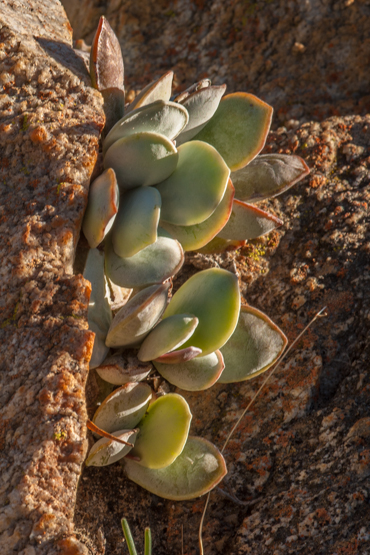
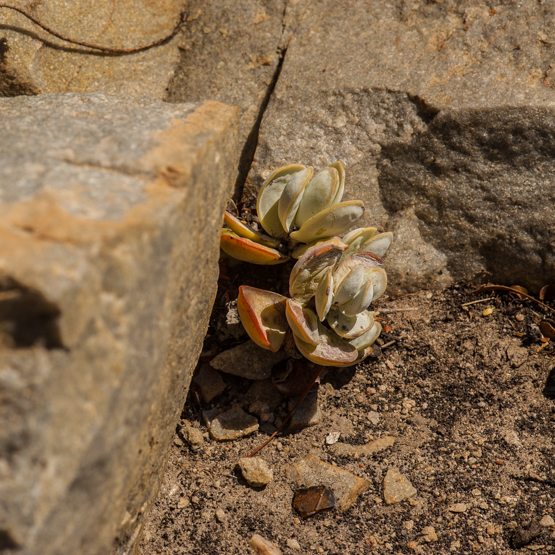
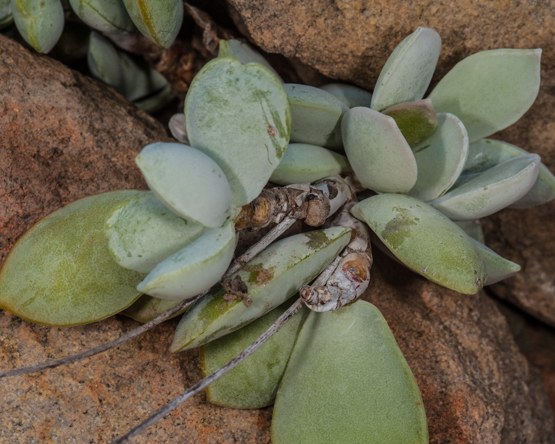
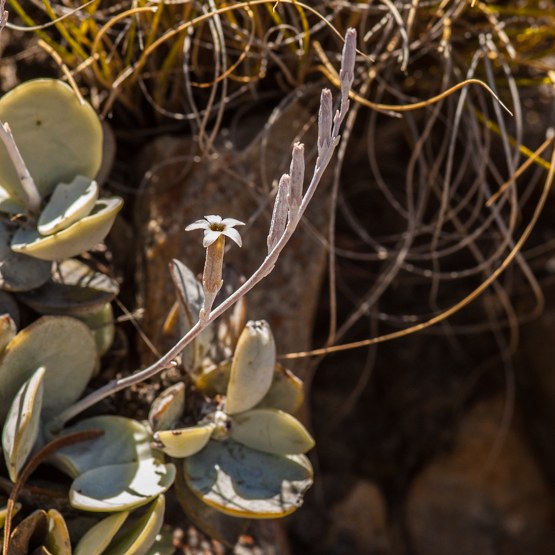
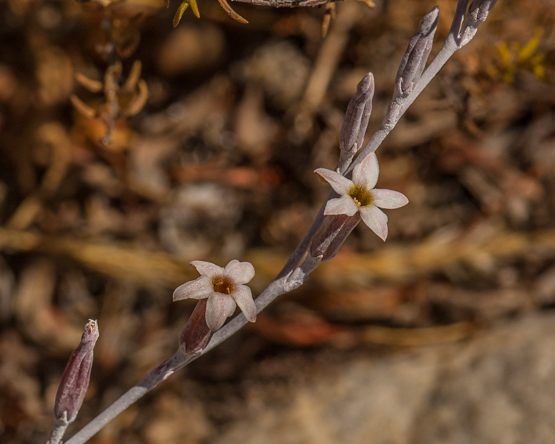
There are not many plant species that occur from South Africa to the Arabian peninsula, but this is one of them. The photos in this post were taken in the mountainous Shikh area in Somaliland (see first picture). In years gone by I also saw quite a few of these plants in Yemen, but strangely enough I never came across them in South Africa.
The shrubs may be up to 2 m tall. The colour of the calyx is described as green and that of the corolla as dark orange to red, rather different from what we see here. However, as Van Jaarsveld and Koutnik remark in their “Cotyledon and Tylecodon”, the corolla inflation between the calyx lobes is diagnostic, so that should remove any possible doubts about the identification.

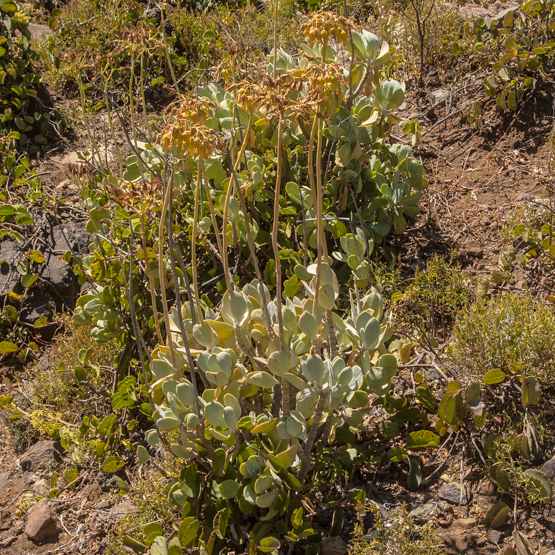
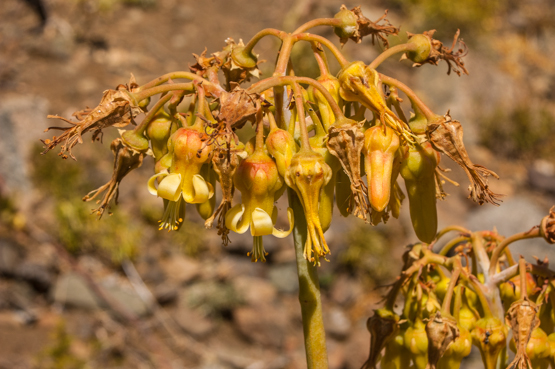
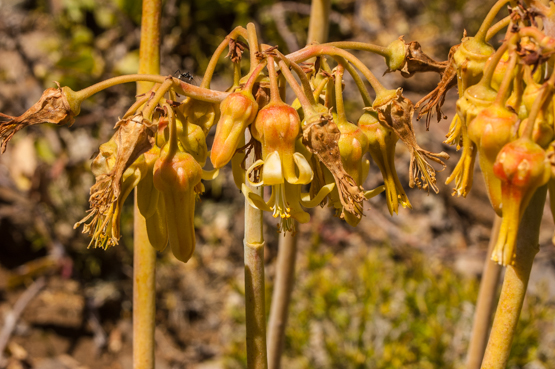
Since I returned from Somaliland last week, I have been pondering how to evaluate the trip.
On the one hand it was a once in a life time experience for me and I’m truly grateful to have been able to do this. I saw many plants that were either new to me or I had not seen for many years. Seeing what people in a country like that have to cope with, also helps in appreciating one’s own situation.
On the other hand we ran into a lot of troubles that made the trip less pleasant and useful than expected. Sometimes the permits we had for travelling within the country were not sufficient; at other times the locals were very suspicious of what we were doing and did not want us to be there. In the end we even decided to cut the visit short and return two days earlier to Ethiopia.
Usually one of the main purposes for a trip like this is making as many pictures as is feasible. Unfortunately the camera I use as a rule (Nikon D700), decided to turn a lot of my pictures completely black. So, although the image took up memory space on the card, it showed only black pixels. Fortunately I brought a spare body (D70) with me, so not al was lost, but calling the problem annoying would be somewhat of an understatement!
In spite of all this, I came home with a number of interesting pictures, some of which will appear on this blog in due course.
To wet your appetite I add some pictures of
Senecio pendulus, Aloe grisea, Dorstenia foetida and Dracaena schizantha resp.
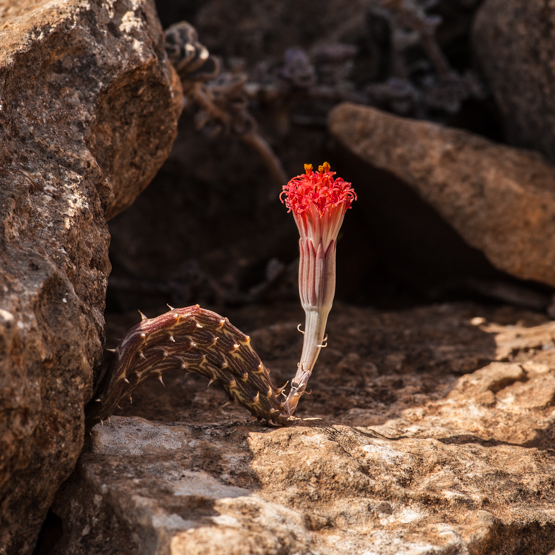
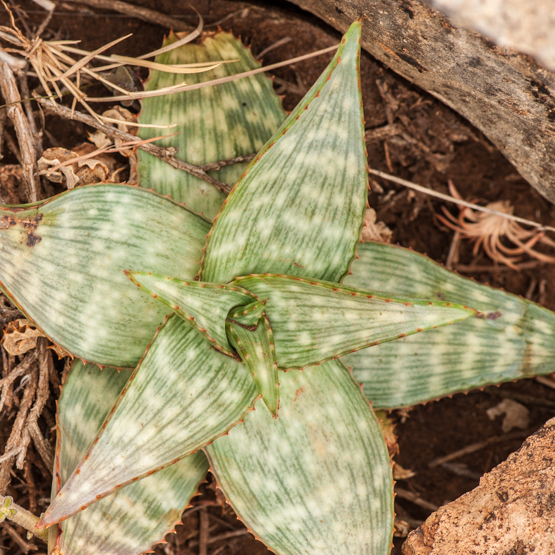
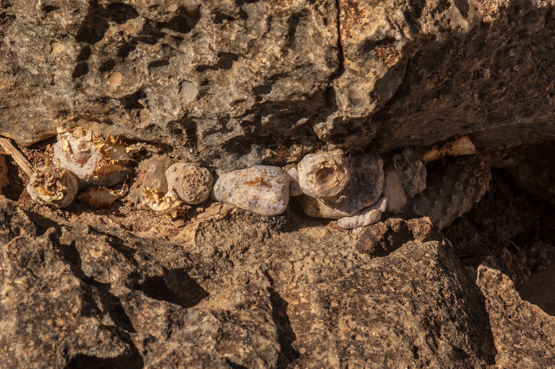
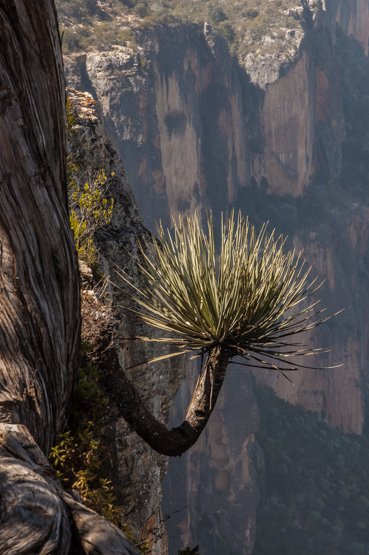
For many, many years I have wanted to visit Somalia and see its wonderful succulents. I paid many visits to other countries in the area: Ethiopia and Kenya in the Horn of Africa and Yemen on the Arabian peninsula. But for one reason or the other, Somalia was always out of reach.
In 1991, the part of Somalia that used to be British Somaliland declared itself independent. The fact that it is not recognized as an independent country by the international community makes it a bit complicated to visit and it is therefore a rather unusual destination for tourists.
A while ago an unexpected occasion came up to visit Somaliland, in the company of a few people who have been there before.
And so, the day after tomorrow I will be flying to Addis Ababa, from where we will take a bus and head east to our destination.
I suppose there will not be much time or opportunity to communicate with the rest of the world while being in Somaliland, so don’t expect any posts from me until the beginning of February.
This name exemplifies one of the quirks of botanical nomenclature.
How can the biggest of the Haworthias (each rosette up to 25 cm tall and about 15 cm across) be called a dwarf? It only makes sense when you know that the plant was originally described as an Aloe, and as such it is a dwarf of course.
H. pumila is found from Worcester to Montagu (as far south as the northern foothills of the Riviersonderend Mountains) and in the southwest corner of the Great Karoo. Usually the plants consist of a single rosette, but over time they may (slowly) produce additional ones.
The first two pictures were taken just north of Matjiesfontein in late July, the third one south east of McGregor in the same period;
Pictures four and five are from the Aneysberg Nature Reserve (late September) and the last two show plants in the uncultivated part of the Montagu Nature Garden (same period).
